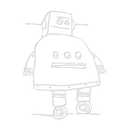Introduction: How to Use a Plasma Cutter
Using a plasma cutter is very convenient and fairly easy. The benefit is that "freeform" cuts can be made to metal based on guiding the cutter. Since this machine works by directing plasma through the creation of a circuit, a ground clamp is necessary, much like welding.
This instructable is strictly to show practical operation of a plasma cutter. For an example where this operation is demonstrated to make something, refer to Sheet Metal Flower to Practice Plasma Cutting and Welding.
I made this at TechShop Detroit (www.techshop.ws).
This instructable is strictly to show practical operation of a plasma cutter. For an example where this operation is demonstrated to make something, refer to Sheet Metal Flower to Practice Plasma Cutting and Welding.
I made this at TechShop Detroit (www.techshop.ws).
Step 1: Choose Work Location
Since we plan on cutting metal, placing the metal on a surface that is safe and allows for freedom of movement is critical. A "grate" or similar surface that functions as a table is perfect.
Step 2: Plug in Unit
Ensure that the unit is off and plug it in.
Step 3: Connect the Air
Connect the external air compressor to the plasma cutter. This is to ensure that the stream of plasma remains under high pressure. To attach the fittings, recede the outer flange of the female connection and insert the male connection.
Step 4: Turn the Air On
Turn on the air flow. In this case, turn the lever ninety degrees from perpendicular to the air line to inline.
Step 5: Attach the Ground Clamp
Set the metal that you are using on the table and attach the ground clamp close to where you will be cutting.
Step 6: Turn on the Machine
Turn on the machine by flipping the switch behind the unit into the ON position.
Step 7: Set the Current
In this case we will set it to 25 for 18 ga sheet metal.
Step 8: Cut the Metal
Use the trigger on the gun to activate the plasma cutter. Note the trigger has a safety that must be lifted before you can depress the trigger. Keep the cutter (nozzle end) close to the metal and use the guide surrounding the nozzle to trace templates if you have them.
Step 9: Turn Off the Machine
When you are finished cutting your metal, turn off the machine.
Step 10: Disconnect the Ground Clamp
Disconnect the ground clamp from the metal you are working on.
Step 11: Turn Off Air
In this case turn off the air by rotating the lever 90 degrees, from inline to perpendicular to the line.
Step 12: Wind Up All Hoses
Wrap up the plasma gun line, air line, and ground line.






